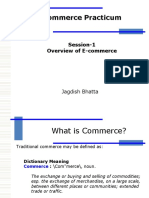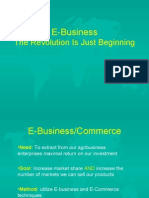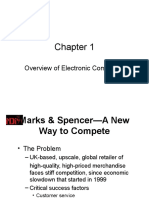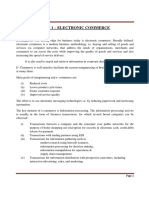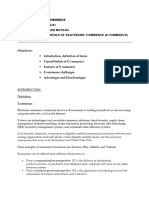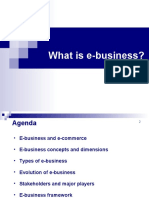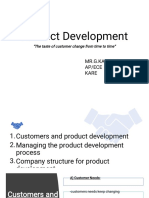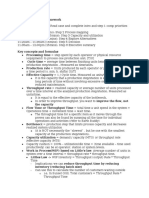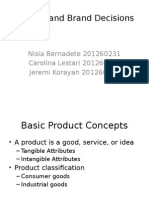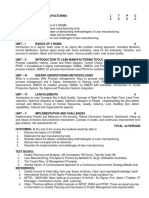0% found this document useful (0 votes)
103 views38 pagesIT Business Strategies Guide
The document discusses key concepts of electronic commerce (e-commerce) and electronic business (e-business). It defines e-commerce as the process of buying, selling, or exchanging products, services, or information via networks including the internet. E-business is defined as e-commerce plus other business activities conducted electronically, including customer service, collaboration with partners, and electronic transactions within an organization. The document provides examples of e-commerce and e-business activities and discusses benefits for businesses and customers of engaging in e-commerce.
Uploaded by
Hesham AbdallaCopyright
© © All Rights Reserved
We take content rights seriously. If you suspect this is your content, claim it here.
Available Formats
Download as PDF, TXT or read online on Scribd
0% found this document useful (0 votes)
103 views38 pagesIT Business Strategies Guide
The document discusses key concepts of electronic commerce (e-commerce) and electronic business (e-business). It defines e-commerce as the process of buying, selling, or exchanging products, services, or information via networks including the internet. E-business is defined as e-commerce plus other business activities conducted electronically, including customer service, collaboration with partners, and electronic transactions within an organization. The document provides examples of e-commerce and e-business activities and discusses benefits for businesses and customers of engaging in e-commerce.
Uploaded by
Hesham AbdallaCopyright
© © All Rights Reserved
We take content rights seriously. If you suspect this is your content, claim it here.
Available Formats
Download as PDF, TXT or read online on Scribd
/ 38
